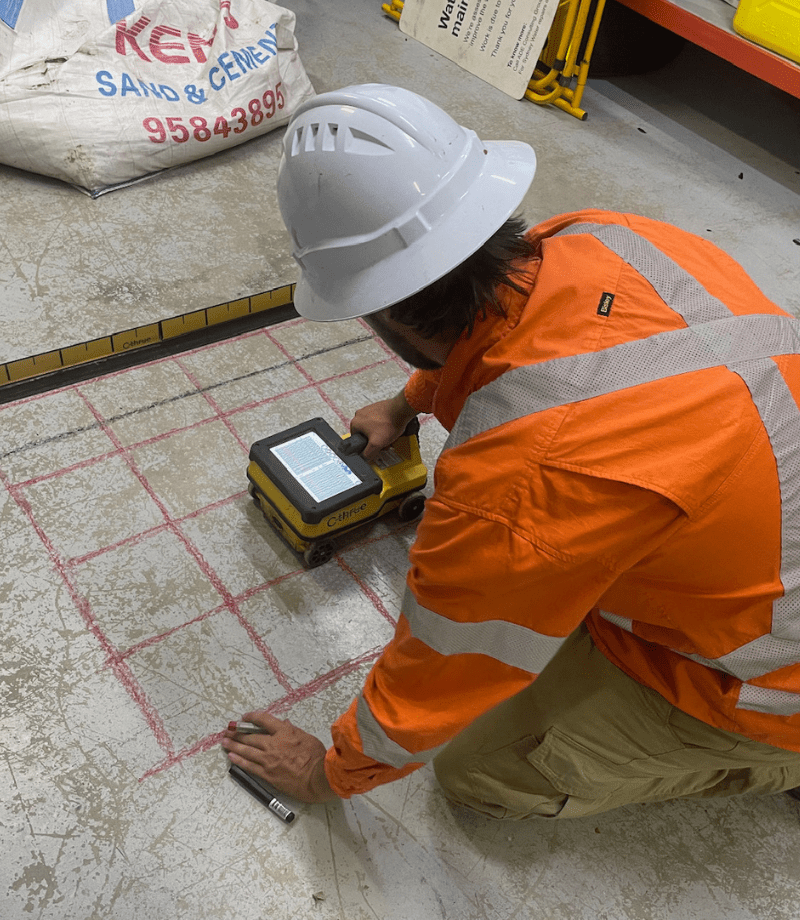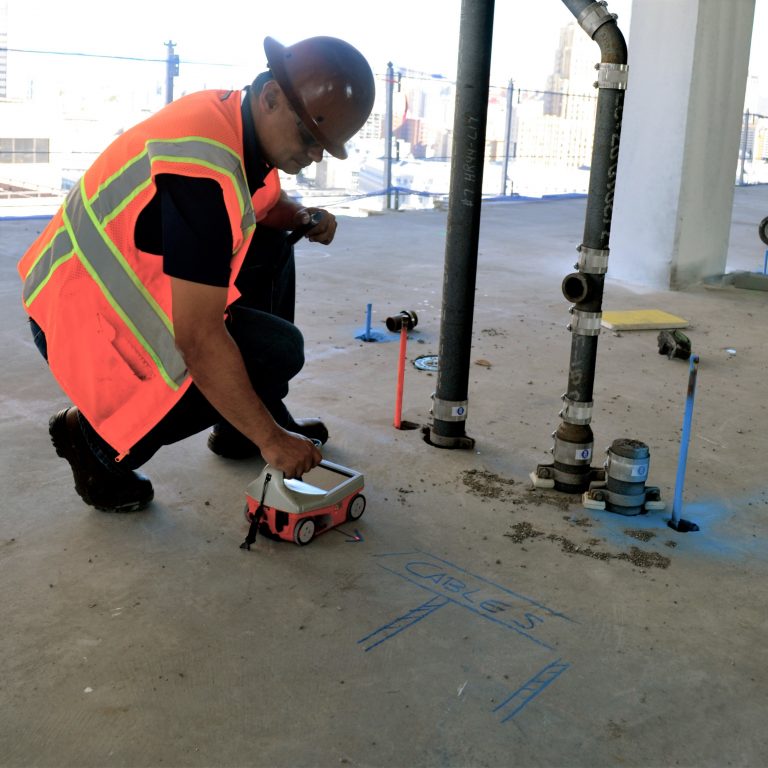Thorough Insights into Concrete Scanning Procedures
Thorough Insights into Concrete Scanning Procedures
Blog Article
Reveal the Transformative Power of Concrete Scanning in Making The Most Of Performance and Security
Concrete scanning has actually emerged as an essential tool in the construction sector, using unmatched benefits in boosting job effectiveness and making sure security criteria. The transformative power of concrete scanning exists in its ability to give in-depth insights and real-time information, transforming exactly how jobs are prepared and performed.
Significance of Concrete Scanning
Guaranteeing the structural stability and safety and security of construction jobs starts with the vital action of performing thorough concrete scanning. Concrete scanning is a non-destructive technique utilized to identify and map subsurface aspects within concrete structures.
In addition, concrete scanning helps in enhancing task timelines and budget plan by preventing unforeseen costs and delays that might arise due to unpredicted blockages within the concrete. Inevitably, spending in extensive concrete scanning is a positive method that enhances both efficiency and security in building and construction projects.
How Concrete Scanning Functions
Concrete scanning runs as an important tool in construction projects by using innovative innovations to spot and map subsurface aspects without causing architectural damages. Ground Penetrating Radar (GPR) and Electromagnetic Induction (EMI) are two primary approaches utilized in concrete scanning. GPR jobs by releasing high-frequency radar pulses into the surface, which recover when they encounter subsurface objects or spaces. The time considered the signal to return indicates the depth and place of the objects. EMI, on the various other hand, utilizes electro-magnetic areas to identify variances in product structures, such as determining rebar or channels within concrete frameworks.
During the scanning procedure, the data gathered is assessed in real-time, permitting instant recognition of possible threats or barriers below the surface area. By employing these advanced technologies, concrete scanning considerably reduces the danger of costly problems and injuries on construction websites.
Advantages of Concrete Scanning
Utilizing innovative scanning technologies in construction tasks uses a wide range of advantages, improving both effectiveness and safety and security on-site. Among the key benefits of concrete scanning is the capacity to identify and locate embedded things such as rebar, post-tension cords, and channels properly. By determining these aspects before drilling or reducing into concrete structures, the risk of unintentional strikes is significantly minimized, protecting against possible injuries to workers and damage to the structure itself. Concrete scanning aids in planning and creating much more properly, as it supplies specific details concerning the place and deepness of structural parts.

Study: Concrete Scanning Success

In an additional instance, a building firm utilized 3D concrete scanning to evaluate the condition old concrete frameworks in a historic structure. The in-depth scans supplied valuable understandings into the level of wear and tear and helped prioritize upkeep efforts properly. By proactively addressing areas of problem recognized with scanning, the business had the ability helpful site to prolong the life expectancy of the structure and ensure passenger security.
These instance studies emphasize the transformative power of concrete scanning in boosting effectiveness, precision, and security in building and construction projects.
Applying Concrete Scanning in Projects
Applying innovative scanning modern technologies during building projects has ended up being increasingly vital for boosting precision and security. By integrating concrete scanning into task preparation and implementation, building and construction teams can determine potential threats, such as rebar or post-tension cords, hidden within concrete frameworks. This aggressive strategy decreases the danger of accidents, delays, and expensive rework, ultimately bring about a lot more efficient job timelines and budget plans.
To apply concrete scanning successfully, job managers should team up closely with seasoned scanning experts to identify one of the most ideal scanning techniques for the particular job demands. Involving scanning professionals from the beginning of a task makes it possible for the team to create extensive scanning plans that deal with crucial locations of problem and ensure thorough data collection.
Furthermore, including concrete scanning right into routine project workflows can streamline decision-making processes, as real-time scan information offers instant insights right into the condition of concrete frameworks - Concrete Scanning. This data-driven approach promotes informed problem-solving and makes it possible for groups to make modifications quickly, promoting a society of effectiveness and safety and security throughout the task lifecycle

Conclusion
In conclusion, concrete scanning plays a vital duty in improving performance and security in building projects. By using innovative technology to useful site identify and map out underlying structures within concrete, this procedure helps to avoid costly blunders, guarantee structural stability, and decrease dangers on website. With the capability to discover covert aspects and give accurate data, concrete scanning shows to be a beneficial tool for maximizing task results and maximizing overall success.
Concrete scanning is a non-destructive approach used to identify and map subsurface components within concrete structures. Additionally, concrete scanning assists in enhancing project timelines and spending plan by preventing unexpected expenses and hold-ups that might emerge due to unforeseen blockages within the concrete. One notable case study includes a large restoration job where concrete scanning played a crucial role in ensuring project success.In another situation, a construction business used 3D concrete scanning to assess the condition of aging concrete frameworks in a historic building. By incorporating concrete scanning right into job planning and execution, building and construction groups can recognize potential threats, such as rebar or post-tension cable televisions, hidden within concrete frameworks.
Report this page